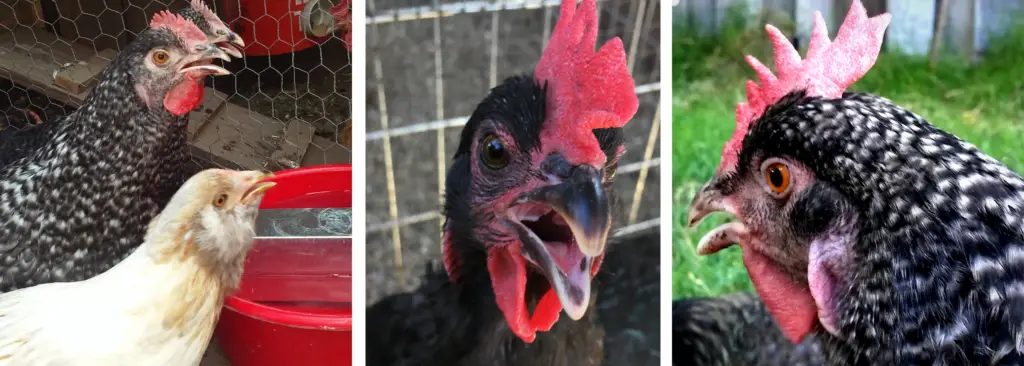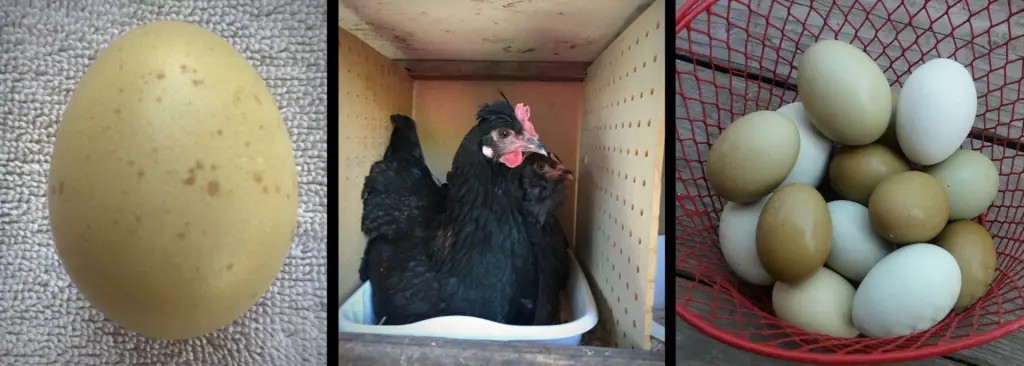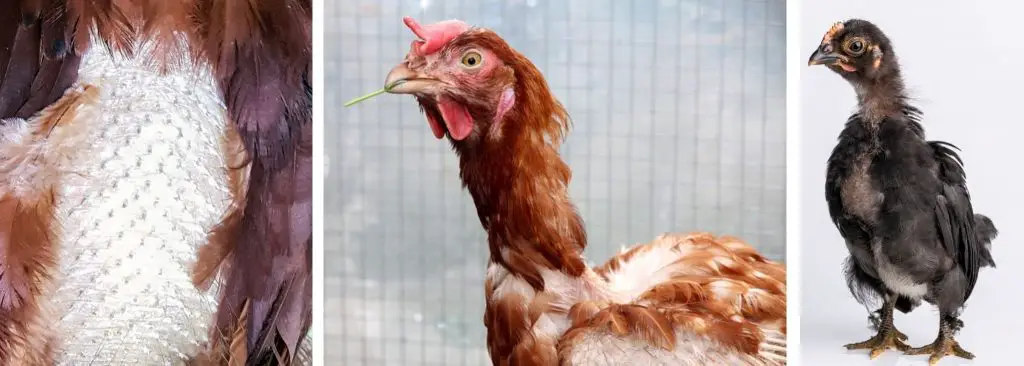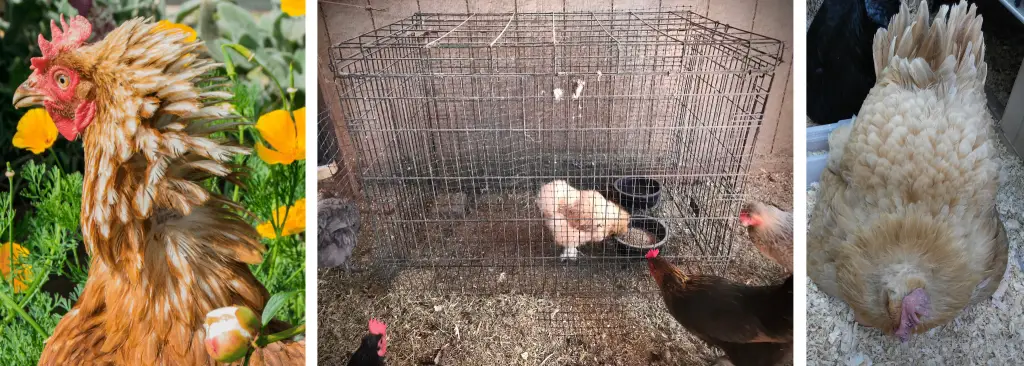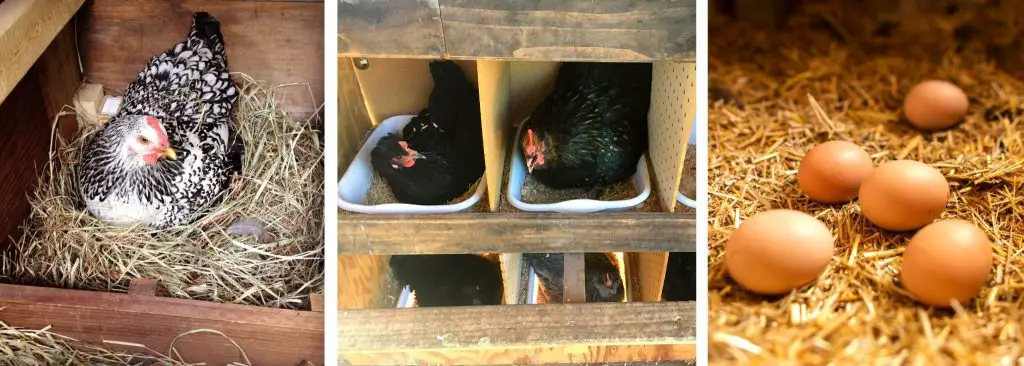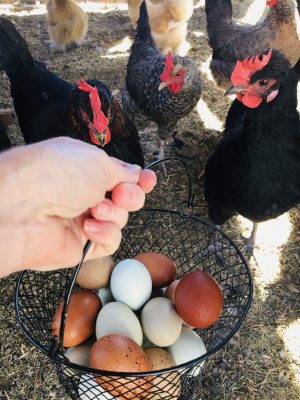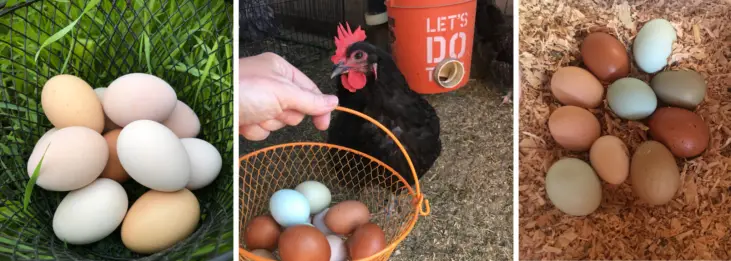
Chickens are generous enough to provide us with a nice supply of eggs anywhere from 2-6 times a week. Unfortunately, many chicken owners find that there are times when their hens stop laying and often ask, “Why do chickens stop laying eggs?”
Why do chickens stop laying eggs?
Chickens stop laying if not exposed to enough daylight, exposed to various stresses, molting, improper diet, are broody or are just old. To increase egg production you can add artificial lighting, change her diet, remove stressors and break her from her broodiness.
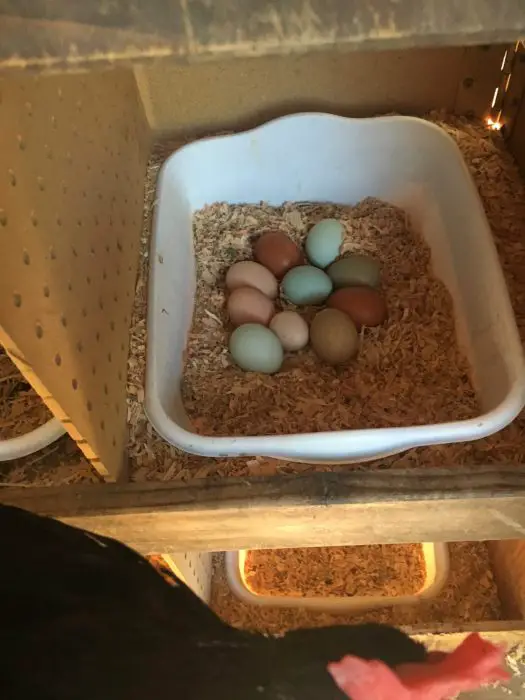
Not Enough Daylight
If your hen is not laying like she used to, it could be due to a decrease light or just that she is not exposed to enough lighting.
Hens need at least 12 hours of daylight to produce eggs. She will perform at her best with between 14-16 hours of sunlight.
Inside a chickens brain is a pineal gland that is stimulated by light. This gland plays an important role in your hens reproductive cycle.

Increases egg laying naturally.
- Improves chicken health.
- Deters parasites: mites, lice, fleas, flies & rodents.
- On SALE!
- SHOP NOW
When a hen is exposed to light, her pineal gland releases hormones, serotonin and melatonin. This is what guides your hens’ circadian rhythm.
During Spring and Summer months, the daylight hours are longer. This is why hens produce more eggs in the Spring and Summer.
It isn’t unusual for hens to completely stop laying in the Fall and Winter, when the hours of daylight are getting shorter.

Extreme Temperatures
If the weather changes suddenly, to either extreme heat or cold, your hen may stop laying. Hens are the most productive when temperatures are between 52-79 degrees Fahrenheit.
Extreme hot weather can cause chickens to suffer from heat stress, especially the heavier breeds. Once exposed to more tolerable temperatures a hen will usually resume her egg production within a week or two.
When the cold weather comes around it isn’t uncommon for hens to decreased their egg production or stop laying all together. Her energy is put into keeping warm, instead of producing eggs.
She uses this time to rest her body. She will start laying again come Spring or when the temperature is more tolerable for her.
Improper Diet
| AGE | % PROTEIN | CALCIUM SUPPLEMENT |
|---|---|---|
| 0-6 WEEKS | 20-22% | NO |
| 7 WEEKS- POINT OF LAY | 14-16% | NO |
| YOUNG, LAYING PULLETS -1 YEAR | 15-18% | 2.75 GRAMS |
| ADULT LAYING HENS | 15-18% | 4-5 GRAMS |
Egg laying requires an increase of protein in your hens’ diet. It is important that laying hens receive a diet that provides them with 15-18% protein.
Young chicks, 0-6 weeks of age require the most protein. Their bones are rapidly developing and they are working hard at growing in feathers. This requires an increase in protein.
From 7 weeks to point of lay, P.O.L., chicks are not growing as rapidly and their protein intake can be lowered.
Once they start laying, it is essential to increase the hens’ protein to keep up her egg production. This can be done by feeding her a layers pellet, crumble or mash. All of these should contain between 15-18% protein.
Hens also have a calcium requirement which should be added at point of lay. Young laying pullets require 2.75 grams and adult laying hens, older than one year, require quite a bit more, 4-5 grams.
Do not make the mistake of feeding your chickens scratch or cracked corn as their main diet. These should only be fed to your chickens sparingly.
Chicken scratch should be fed only as a treat, because that is essentially what it is. Scratch only provides around 8-9% protein and lacks the nutritional contents that a hen requires.
They are Broody
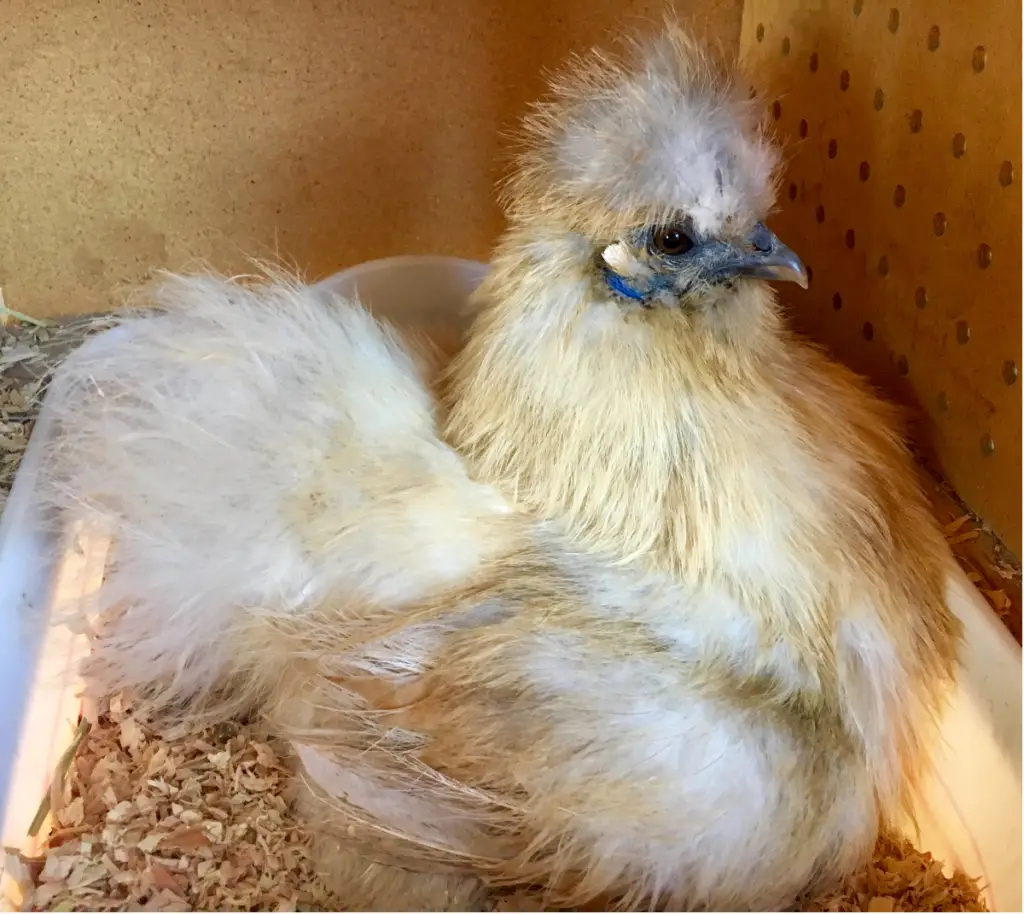
When a hen goes broody, she will stop laying, usually until she hatches a clutch of eggs or she is broken.
A broody hen is easy to spot. She will sit in her nest box, whether or not there is a clutch of eggs to hatch. Her hormones are peaking and telling her its time to hatch some eggs.
A broody hen will seldom leave her nest box. She generally only leaves the nest box one time a day to poop, eat and drink. Then she returns promptly to her box.
This can go on for weeks on end. This can be especially bad if you have hens just to provide you with eggs.
They are Stressed
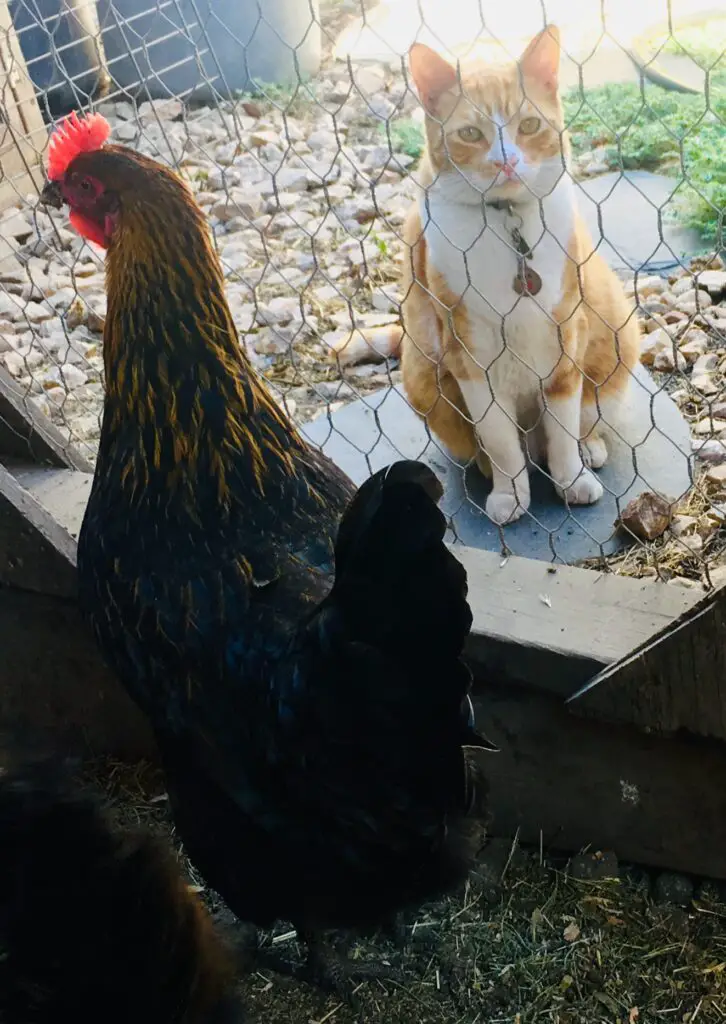
If a chicken in subjected to stress, it can stop laying. There are many things that can stress a hen and stop her from laying.
According to this article, 11 Secrets that Will Get Your Chickens Laying More Eggs, there are several stressors that can cause your hen to stop laying:
Top Stressors that Stop Your Hen From Laying
| TOP STRESSORS THAT CAN STOP YOUR HEN FROM LAYING EGGS |
|---|
| 1. Predators are getting into their coop at night. |
| 2. Neighborhood dog is terrorizing them. |
| 3. Kids are chasing them. |
| 4. Injury |
| 5. Illness |
| 6. Overcrowding |
| 7. Insect infestation |
| 8. Lack of food or water |
| 9. Too hot or too cold |
They are Molting
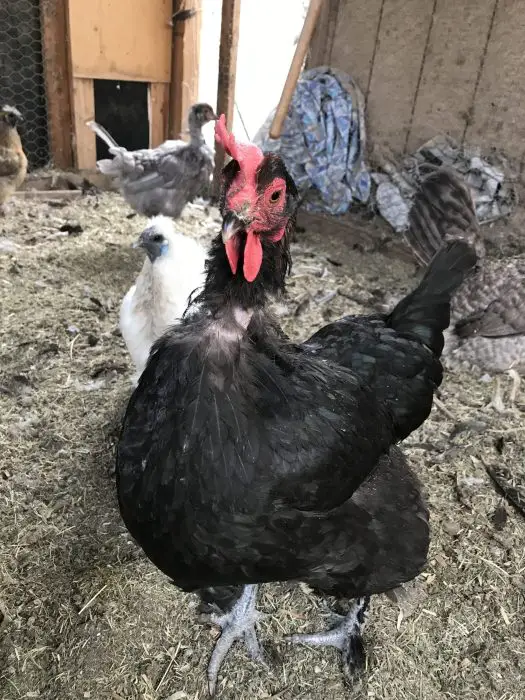
Hens can stop egg laying if they are going through a molt. Molting is when a chicken loses its feathers and grows in new one’s. As a flock owner, when your chickens are going through a molt, your coop can look like one of your chickens was murdered. Feathers EVERYWHERE!!
Molting usually occurs when the days begin to get shorter, around the Fall. It is your chickens natural instinct to lose their old, dull feathers and replace them with new, full feathers to better insulate them during the cold weather.
How long do chickens molt and not lay eggs?
Chickens molt usually one time a year, beginning about 16-18 months of age. A molt can take anywhere from 3 – 16 weeks. During this time, most chickens take a break from laying eggs.
Some chickens only lose feathers around their neck, others go through a full molt. They look pathetic, but it’s only temporary. Once they grow in their new shiny, fluffy feathers, they look gorgeous again!
When your chicken is going through a molt, it is important to increase their protein intake. Growing in new feathers requires increased protein.
Old Age

Hens begin laying at around 18 weeks, some sooner and some later, depending upon the breed. The first year is their most productive year of laying and it slowly declines from there. Most hens, around 6 years of age begin to lay sporadically or stop laying completely.
| AGE/YEAR | LAYING CAPACITY % | # EGGS |
|---|---|---|
| 1st YEAR | 100% | 300 (5-6 eggs/wk) |
| 2nd YEAR | 80% | 240 (4-5 eggs/wk) |
| 3rd YEAR | 70% | 210 (4 eggs/wk) |
| 4th YEAR | 60% | 180 (3-4 eggs/wk) |
| 5th YEAR | 50% | 150 (3 eggs/wk) |
| 6th YEAR | 40% | 120 (2 eggs/wk) |
How Can I Encourage My Chickens to Lay Eggs? 5 Tips
1. Break your Broody Hens
A broody hen will not lay eggs for you. It’s ok to have a broody hen, if what you want is for her to hatch a clutch of eggs. But if you are wanting eggs, you need to break her from her broodiness.
You can try removing her from her nest box every time you see her in there. This would mean you have to spend extra time in the coop area observing her behavior.
If this doesn’t work, you may have to put her in a “time out pen” or “chicken jail” for 24-48 hours. A dog cage works great for this.
I like to first try 24 hours and give her a chance to “snap out of it.” If that doesn’t work, I put her in for another 24 hours. Do this every day until she stops returning to the nest box.
The important thing is to not allow her to “nest” in the cage. Set the cage up on two, 2″ x 4″‘s on either side. The only thing that should be available in her cage is food and water. The idea is to not let her nest and to allow her underside to feel a draft.
2. Provide Desirable Nesting Boxes
Hens prefer to lay in a quiet, dark location. Make sure that they are the proper size, height and location for the type of breed you have. They should be free from mites, lice and fleas and cleaned regularly. For more information on this, read my article, “Simple Guide to Setting Up the Best Hen Nesting Boxes.”
3. Add a Light to Your Chicken Coop
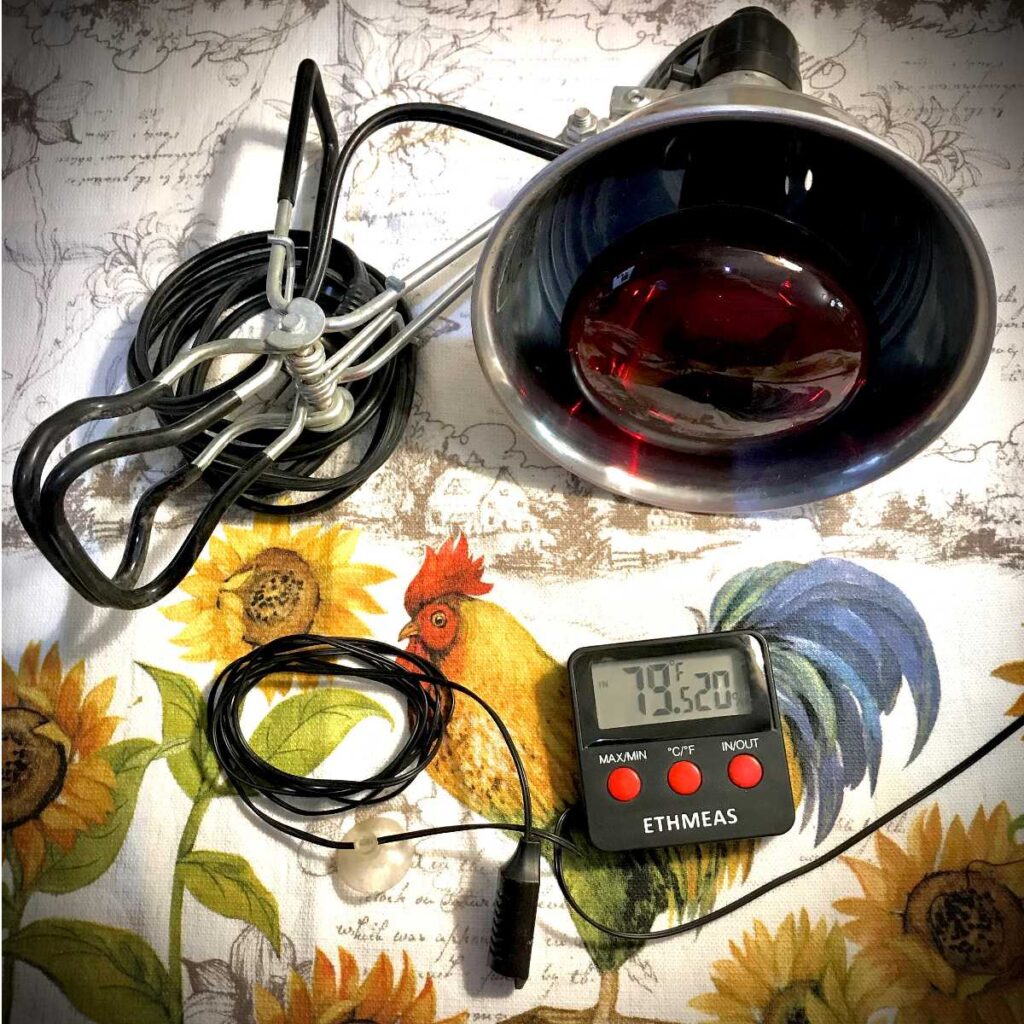
Come Fall, the days begin to shorten. This means that the amount of daylight that your hens are exposed to is decreasing. When this happens, egg production declines or stops completely.
By adding a light to your chicken coop during the Fall and Winter months you can “trick” your hens into laying through the shortened days.
Chickens need time without the lights on in the coop as well. It’s best to have your light on a timer that will go on in the early morning hours (when it is still dark outside), but have it turn off when the sun comes up.
Hens are the most productive with 14-16 hours of sunlight. So set your light timer so they receive no more than a total of 16 hours of light with both the natural sunlight and coop light combined.
Too much light can actually cause your chickens to produce less eggs! So make sure you adjust your coop timer as the days begin to get longer.
4. Remove Stressors
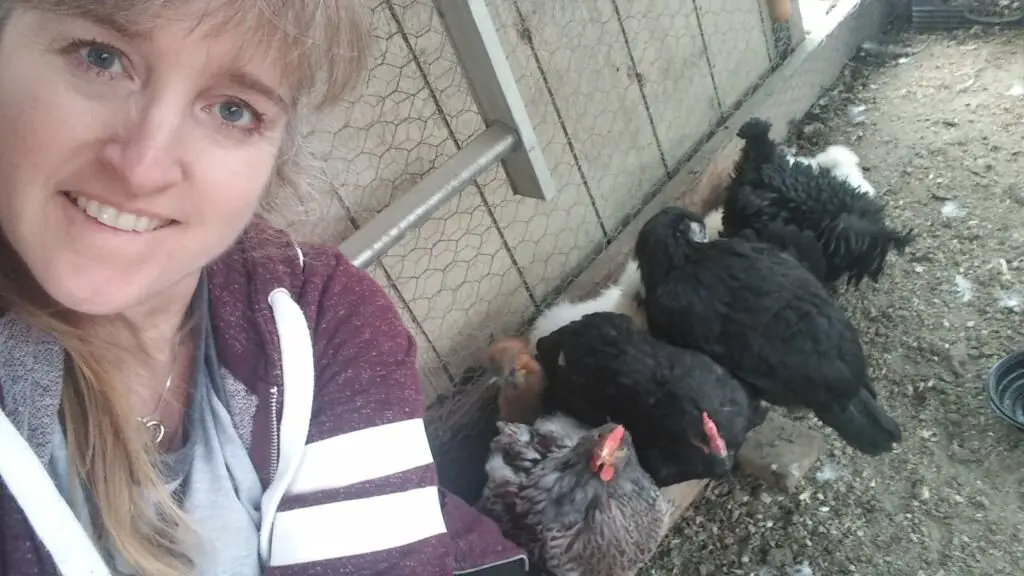
I always find that spending time in with my chickens gives me a great opportunity to see how they are doing and recognize any problems that they may be encountering.
Fix that hole in the chicken coop that rats or other animals can get through. You may be having predators getting in the coop at night.
Fix that automatic chicken door that you thought was closing every night.
Don’t let your neighbors kids chase your chickens. It’s not cute!
Check their nest boxes for lice and scatter some diatomaceous earth in it. This will help kill mites that may be getting at your chickens.
In spending some time with them, you may notice that one of them has bumblefoot, a foot infection, that needs treated. Or maybe one of the hens is being picked on by others in the flock that you need to attend to.
Make sure that all of your chickens have a shaded area to retreat to in the hot weather and fresh, cool water available at all times.
During the cold weather, chickens need an area to retreat to that protects them from the cold wind.
5. Change Their Diet
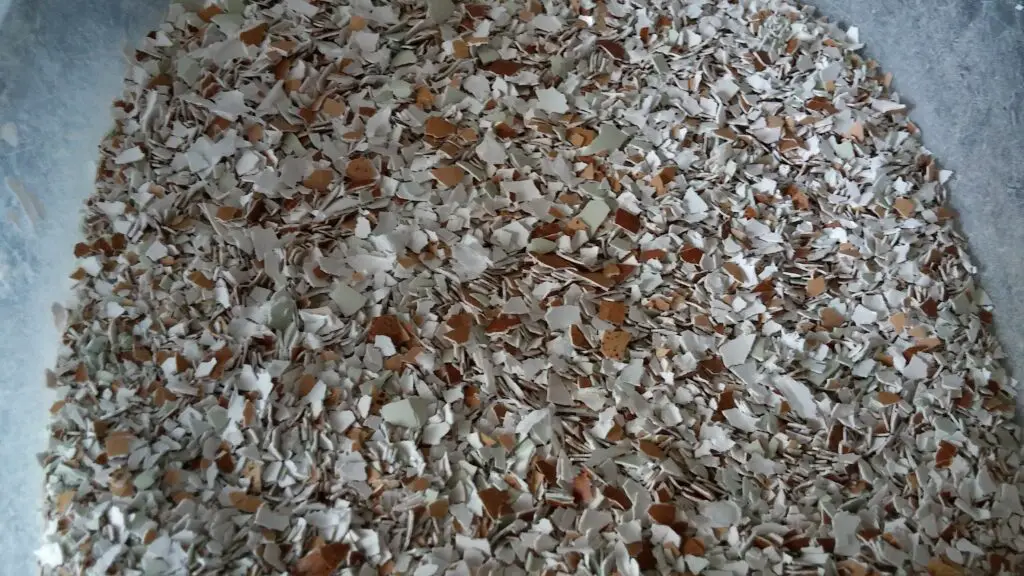
Hens need to be fed a layers pellet, crumble or mash with 15-18% protein. If she is not receiving enough protein, she will stop laying.
Also, offer oyster shell alongside her feed to help strengthen her egg shells. Hens are smart and will only eat as much as they need.
You can also save their egg shells, dry them, crush them and serve it back to them. Egg shells are a great source of calcium for your hens.

Manna Pro Oyster Shell Poultry Treat, 50 lb., 1000209 [More]
Let Your Hen Take a Break

Hens naturally stop laying for a reason. Laying eggs is very taxing on a their body and they need a break. Personally, I think it’s good to allow your hens to take a break from laying. It will make them an even stronger and more efficient layer when they restart.
As a flock owner, it is up to you if you want to force them through the year without taking a break.
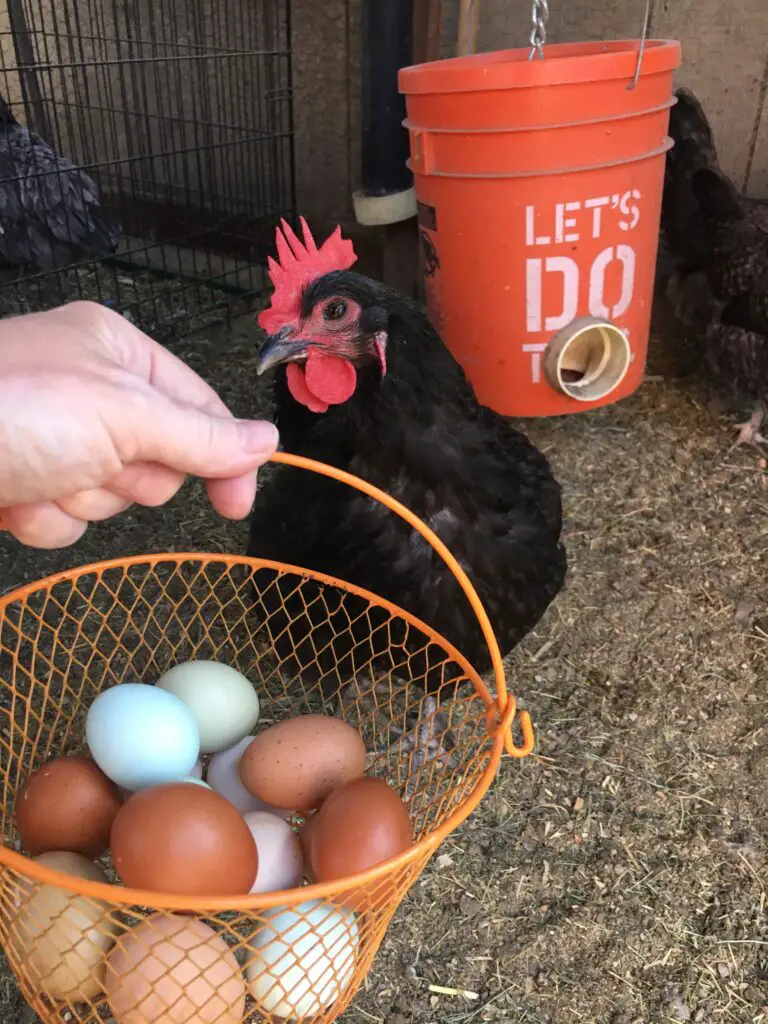
CONCLUSION: Why do Chickens Stop Laying Eggs? 5 Important Tips
| WHY DO CHICKENS STOP LAYING EGGS | SOLUTION |
|---|---|
| NOT ENOUGH DAYLIGHT | INCREASE LIGHTING |
| EXTREME TEMPERATURES | PROVIDE SHADE, SHELTER FROM ELEMENTS |
| BROODY HEN | BREAK BROODY HENS |
| INSUFFICIENT DIET | CHANGE DIET |
| STRESSED | REMOVE STESSORS |
| MOLTING | INCREASE PROTEIN |
Hens will stop laying for various reasons, but for most things it is a correctable problem. Most hens will naturally take a break from laying during a molt. During this time, they need to put their energy into growing new feathers and keeping warm during the cold winter months.
Spend time with your flock and watch how they interact with each other. Attend to their needs promptly and you will be rewarded with a basket full of eggs!

